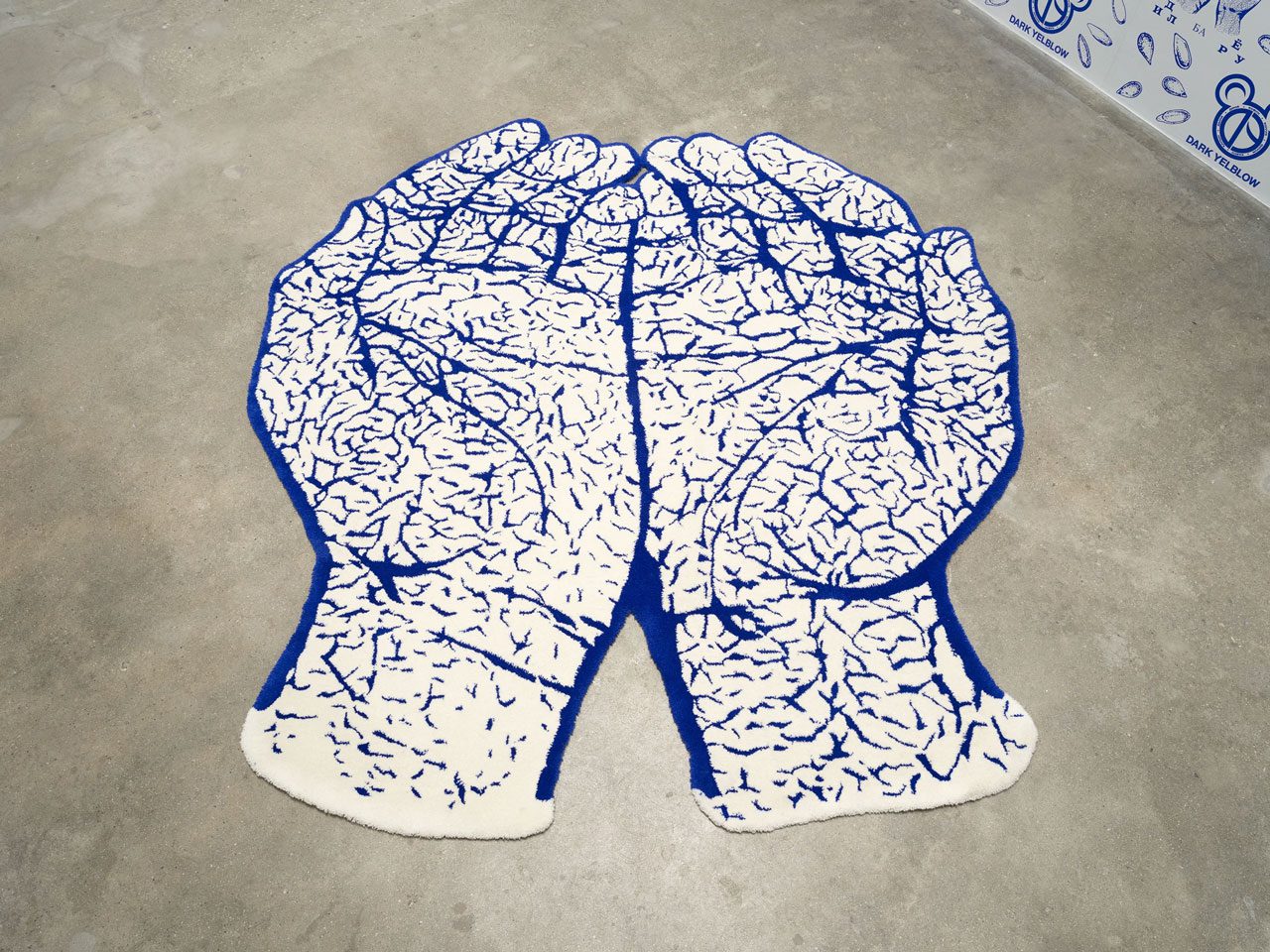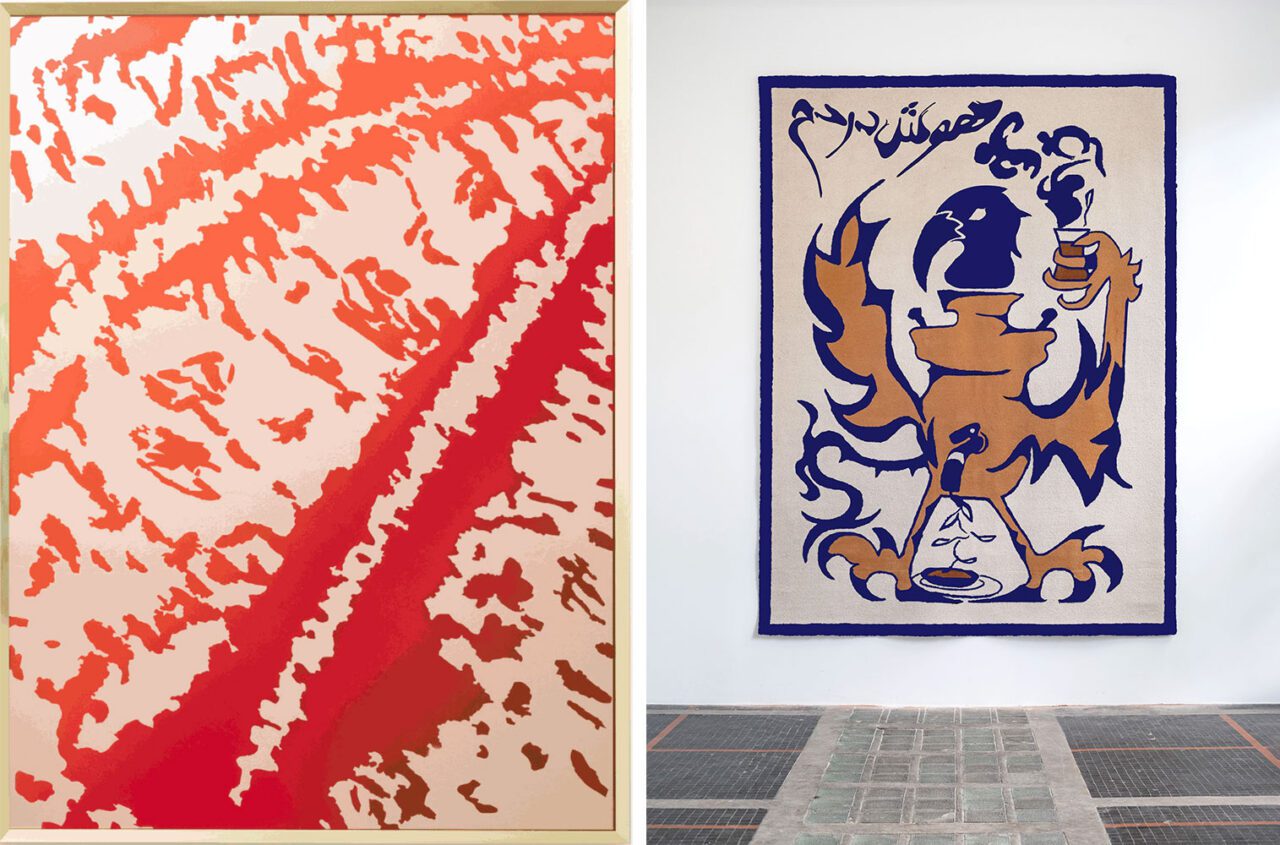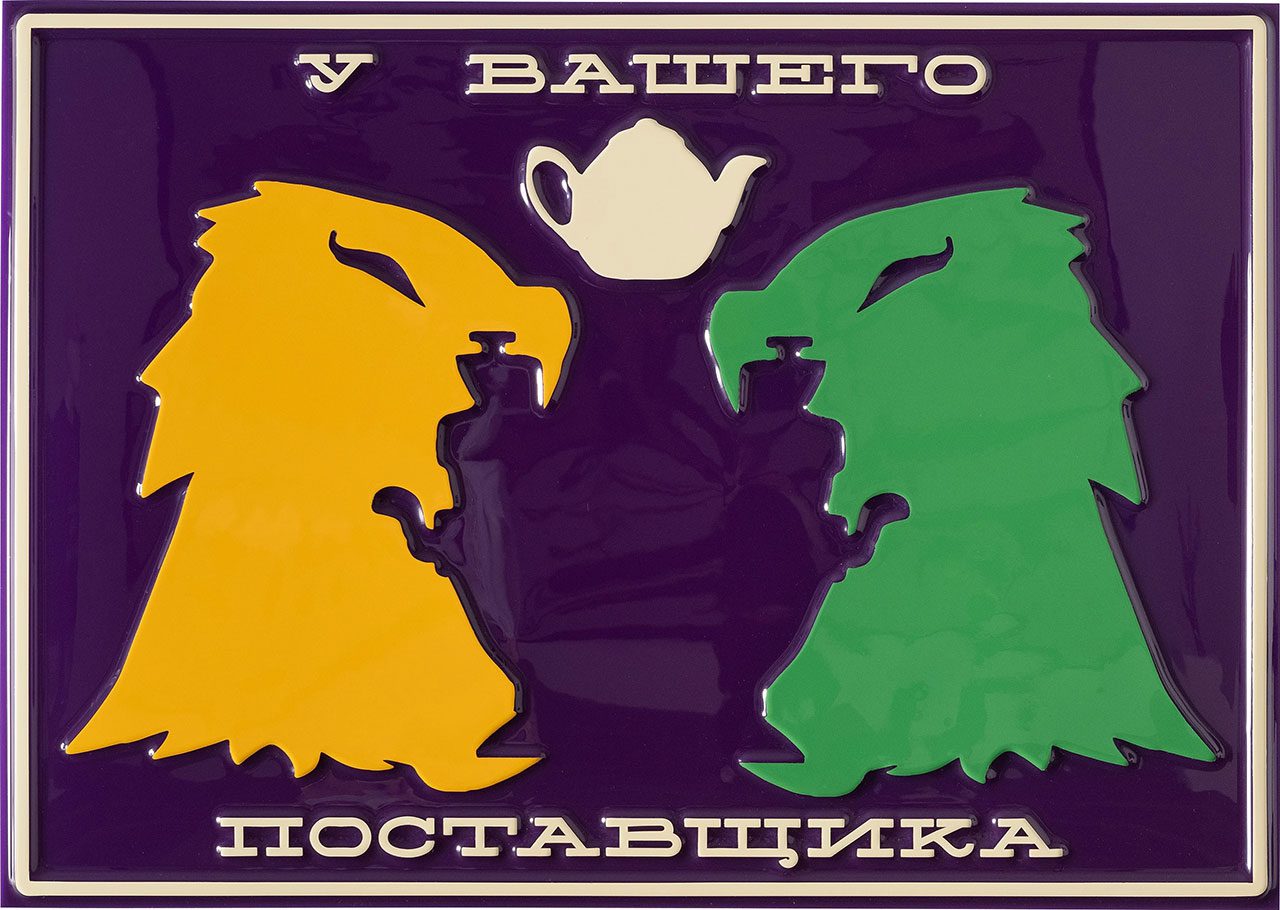ART CITIES: Dubai-Slavs and Tatars
Slavs and Tatars is an art collective devoted to an area East of the former Berlin Wall and West of the Great Wall of China, termed Eurasia. Their practice is primarily based on three activities: exhibitions, books and lecture-performances. With a heady mix of high and low brow humor, the artists turn to sculptures, installations, and text to excavate and explore a geography that is equally imagined as it is political.
By Dimitris Lempesis
Photo: The Third Line Gallery Archive
Employing an archeological spirit, Slavs and Tatars uncover layers of language, politics, tradition and ritual; opening new paths of contemporary discourse, the artists consider the hybridization of a region, shared cultures and poignant questions of identity in the present day. Slavs and Tatars in their solo exhibition “Simurgh Self-Help” present a new body of work inspired by Marcel Broodthaers’ “Musée d’Art Moderne – Département des Aigles”, one of the most influential works of conceptual art of the 20th century. In “Simurgh Self-Help”, Slavs and Tatars embark on an inventive ‘translation’ of the eagle through the lens of Simurgh, a mythical bird deeply rooted in Turkic and Persianate folklore, Sufi traditions, and the literature of the Caucasus and Central Asia. The Simurgh is depicted in Iranian art as a winged creature in the shape of a bird, gigantic enough to carry off an elephant or a whale. It appears as a peacock with the head of a dog and the claws of a lion – sometimes, however, also with a human face. The Simurgh is inherently benevolent. The Simurgh has an enmity towards snakes, and its natural habitat is a place with plenty of water. Its feathers are said to be the color of copper in some versions, and though it was originally described as being a dog-bird, later it was shown with either the head of a man or a dog. Simurgh is both female and male, though most frequently portrayed as female, and is said to have witnessed the destruction of the world three times over. The Gallery One of Third Line Gallery is dedicated to exploring the mythology of Simurgh, a winged creature often depicted with the body of a peacock and the head of a dog. Simurgh is both female and male, though most frequently portrayed as female, and is said to have witnessed the destruction of the world three times over. The exhibition juxtaposes the eagle and the Simurgh to offer a speculative history, presenting an alter-ego for contemporary societies dealing with dilemmas about national identity and nationalism. Through this ‘translation’, Slavs and Tatars expand Broodthaers’ critique to include the often-overlooked region of Central Asia and the Caucasus, an area historically situated between fading empires – Russian, Ottoman, and Persian – and contemporary revanchist forces. If the eagle serves as a repository for nationalism and empire, rooted in geopolitical concerns, the Simurgh evokes an empire of senses and a dominion of the otherworldly, bridging the affective and the extractive. In Gallery Two, the exhibition pivots to explore melons as Central Asian repositories of value, knowledge, and world-building. Writing, central to Slavs and Tatars’ practice, appears in the texture of melon skins and within the pages of books. Here, the melons, depicted as glass lamps or mirrors, tell the story of the region via flora, rather than fauna. Slavs and Tatars have long been drawn to the peripheries of knowledge, the edges of belief systems, and the margins of rituals – places where syncretism and hybridity thrive. Today, however, they also seek to activate and redeem what unites us, as much as what distinguishes us. If the eagle serves as a repository for nationalism and empire, matters of this world in the geopolitical sense, the Simurgh helps us unlock an empire of senses and the dominion of the other-worldly: from the affective to the extractive. On the one hand stands the eagle, demoted in modern times to a secular symbol of vulgar nationalism as is the case in Poland but also Germany, the US and countless other nations, a short-hand of sorts for machismo and other unsavory ideas. On the other, Simurgh a metaphysical creature and allegory for spiritual elevation and self-knowledge, who is often depicted as flaming if not entirely gender-fluid. By ‘translating’ the eagle into a Simurgh, the collective expands the limited worldview of Broodthaers’ original and pioneering institutional critique to include an often over-looked region (Central Asia and Caucasus) sandwiched between fading, former and/or revanchist empires (Russian, Ottoman, Persian. With the ability to fly, to travel, to sing, birds have long enchanted humans as symbols of liberation, from Aristophanes “Ornithes” to Farid ud-Din Attar’s “The Conference of the Birds”. Attar’s 12th century masterpiece famously stages an epic journey of several birds in search of the Simurgh. The literary device encapsulates the essence of democracy as a system that honors the voice of the individual while emphasizing the importance of collective decision-making, sharing and action.
Photo: Slavs and Tatars, Samovar, 2024, Vacuum-formed plastic, acrylic paint, 71 × 100 cm, Edition 2 of 3 + 1AP, © Slavs and Tatars, Courtesy the artists and The Third Line Gallery
Info: The Third Line Gallery, Alserkal Avenue, Warehouse 78, Street 8, Al Quoz 1, Exit 43 off Sheikh Zayed Road, Dubai, UAE, Duration: 4/2-4/4/2025, Days & Hours: Daily 11:00-19:00, https://thethirdline.com/

Right: Slavs and Tatars, Simorgh Solidarność, 2011, Needle-work on fabric, synthetic velvet, leather, cotton, 200 x 120 cm, © Slavs and Tatars, Courtesy the artists and The Third Line Gallery


Right: Slavs and Tatars, Rabbit’s Blood, 2025, Woolen yarn, 400 x 300 cm, © Slavs and Tatars, Courtesy the artists and The Third Line Gallery



